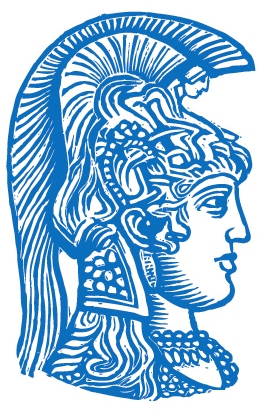 National and Kapodistrian University of Athens
Department of Biology
Biophysics & Bioinformatics Laboratory
National and Kapodistrian University of Athens
Department of Biology
Biophysics & Bioinformatics Laboratory
Protein Information |
|
|---|---|
| Protein Name | UDP-glucuronosyltransferase 1A1 |
| Accession Code | P22309 |
| Gene | UGT1A1 |
| Organism | Homo sapiens | Human (Taxonomy: 9606) |
| Part of Reference Proteome? | Yes |
| Sequence (Length: 533) |
Description |
Position in the Nuclear Envelope |
|
|---|---|---|
| Location | Location ID | Description |
| Perinuclear Region | SL-0198 | The perinuclear region is the cytoplasmic region just around the nucleus. | Membrane Topology |
| Topology | Source | Annotation Type |
| Transmembrane | UniProt | Sequence Analysis {ECO:0000255} | Assigned Ontology terms |
Description |
|
|---|---|
| [Isoform 1]: UDP-glucuronosyltransferase (UGT) that catalyzes phase II biotransformation reactions in which lipophilic substrates are conjugated with glucuronic acid to increase the metabolite's water solubility, thereby facilitating excretion into either the urine or bile (PubMed:12181437, PubMed:15472229, PubMed:18004206, PubMed:18004212, PubMed:18719240, PubMed:19830808, PubMed:23288867). Essential for the elimination and detoxification of drugs, xenobiotics and endogenous compounds (PubMed:12181437, PubMed:18004206, PubMed:18004212). Catalyzes the glucuronidation of endogenous estrogen hormones such as estradiol, estrone and estriol (PubMed:15472229, PubMed:18719240, PubMed:23288867). Involved in the glucuronidation of bilirubin, a degradation product occurring in the normal catabolic pathway that breaks down heme in vertebrates (PubMed:17187418, PubMed:18004206, PubMed:19830808). Also catalyzes the glucuronidation the isoflavones genistein, daidzein, glycitein, formononetin, biochanin A and prunetin, which are phytoestrogens with anticancer and cardiovascular properties (PubMed:18052087, PubMed:19545173). Involved in the glucuronidation of the AGTR1 angiotensin receptor antagonist losartan, a drug which can inhibit the effect of angiotensin II (PubMed:18674515). Involved in the biotransformation of 7-ethyl-10- hydroxycamptothecin (SN-38), the pharmacologically active metabolite of the anticancer drug irinotecan (PubMed:12181437, PubMed:18004212, PubMed:20610558). {Experimental EvidencePubMed:12181437, Experimental EvidencePubMed:15472229, Experimental EvidencePubMed:17187418, Experimental EvidencePubMed:18004206, Experimental EvidencePubMed:18004212, Experimental EvidencePubMed:18052087, Experimental EvidencePubMed:18674515, Experimental EvidencePubMed:18719240, Experimental EvidencePubMed:19545173, Experimental EvidencePubMed:19830808, Experimental EvidencePubMed:20610558, Experimental EvidencePubMed:23288867}. [Isoform 2]: Lacks UGT glucuronidation activity but acts as a negative regulator of isoform 1. {Experimental EvidencePubMed:17187418, Experimental EvidencePubMed:18004212, Experimental EvidencePubMed:20610558}. | Assigned Ontology terms |
Description |
|
|---|---|
| Gilbert syndrome (GILBS) [MIM:143500]: Occurs as a consequence of reduced bilirubin transferase activity and is often detected in young adults with vague non-specific complaints. {Experimental EvidencePubMed:11013440, Experimental EvidencePubMed:12139570, Experimental EvidencePubMed:17496722, Experimental EvidencePubMed:7715297, Experimental EvidencePubMed:9627603}. Note=The disease is caused by variants affecting the gene represented in this entry. Transient familial neonatal hyperbilirubinemia (HBLRTFN) [MIM:237900]: A condition characterized by excessive concentration of bilirubin in the blood, which may lead to jaundice. Breast milk jaundice is a common problem in nursing infants. {Experimental EvidencePubMed:11061796}. Note=The disease may be caused by variants affecting the gene represented in this entry. The defect has been ascribed to various breast milk substances, but the component or combination of components that is responsible remains unclear. Defects of UGT1A1 are an underlying cause of the prolonged unconjugated hyperbilirubinemia associated with breast milk. One or more components in the milk may trigger the jaundice in infants who have such mutations. Mutations are identical to those detected in patients with Gilbert syndrome, a risk factor of neonatal non-physiologic hyperbilirubinemia and a genetic factor in fasting hyperbilirubinemia. Crigler-Najjar syndrome 1 (CN1) [MIM:218800]: Patients have severe hyperbilirubinemia and usually die of kernicterus (bilirubin accumulation in the basal ganglia and brainstem nuclei) within the first year of life. CN1 inheritance is autosomal recessive. {Experimental EvidencePubMed:11013440, Experimental EvidencePubMed:15712364, Experimental EvidencePubMed:1634050, Experimental EvidencePubMed:17229650, Experimental EvidencePubMed:19830808, Experimental EvidencePubMed:23992562, Experimental EvidencePubMed:7906695, Experimental EvidencePubMed:7989045, Experimental EvidencePubMed:7989595, Experimental EvidencePubMed:8226884}. Note=The disease is caused by variants affecting the gene represented in this entry. Crigler-Najjar syndrome 2 (CN2) [MIM:606785]: Patients have less severe hyperbilirubinemia and usually survive into adulthood without neurologic damage. Phenobarbital, which induces the partially deficient glucuronyl transferase, can diminish the jaundice. CN2 inheritance is autosomal dominant. {Experimental EvidencePubMed:11013440, Experimental EvidencePubMed:11370628, Experimental EvidencePubMed:12402338, Experimental EvidencePubMed:14550264, Experimental EvidencePubMed:15712364, Experimental EvidencePubMed:17229650, Experimental EvidencePubMed:18004206, Experimental EvidencePubMed:19830808, Experimental EvidencePubMed:23099197, Experimental EvidencePubMed:23992562, Experimental EvidencePubMed:7989595, ECO:0000269|PubMed:8276413, ECO:0000269|PubMed:8280139, ECO:0000269|PubMed:8706880, ECO:0000269|PubMed:9621515, ECO:0000269|PubMed:9639672}. Note=The disease is caused by variants affecting the gene represented in this entry. | Database Associations |
| OMIM | 143500 191740 218800 237900 601816 606785 |
| DisGeNET | 54658 |
Interactions with Nuclear Envelope proteins (2 interactors) |
|||
|---|---|---|---|
Interactions with other proteins (8 interactors) |
|||
Database | Links |
| UNIPROT | P22309 A6NJC3 B8K286 |
| Pfam | PF00201 |
| PROSITE | PS00375 |
| OMIM | 143500 191740 218800 237900 601816 606785 |
| DisGeNET | 54658 |